Identifying insect eggs is crucial for pest management and ecological balance. Common species like cockroaches, termites, and bed bugs lay eggs with distinct shapes and colors. Understanding their characteristics helps in early detection and control, ensuring healthier gardens and homes.
Importance of Identifying Insect Eggs
Identifying insect eggs is vital for effective pest management and ecological balance. Early detection prevents infestations, protecting crops and gardens. Accurate identification helps monitor pest populations, enabling targeted interventions. This reduces reliance on broad-spectrum pesticides, safeguarding beneficial insects and ecosystems. Insect egg identification also supports biological control methods, enhancing agricultural sustainability. Understanding egg characteristics aids in distinguishing harmful pests from beneficial species, ensuring balanced ecosystems. This knowledge is essential for farmers, gardeners, and conservationists to maintain healthy environments and prevent economic losses. Precise identification is key to addressing pest issues responsibly and sustainably.

Overview of Common Insect Eggs in the USA
In the USA, common insect eggs include those of cockroaches, termites, and bed bugs, each with unique features. Cockroach eggs are typically brown or black and found in clusters. Termite eggs are pale and often located in soil or wood. Bed bug eggs are white and laid in cracks and crevices. Other notable species include fly eggs, which are tiny and often found in decaying matter, and beetle eggs, which vary in appearance depending on the species. Identifying these eggs can help in early detection of infestations, preventing significant damage to homes and agricultural settings, and ensuring effective pest control measures are implemented promptly.
Locating Insect Eggs
Insect eggs are often found on the undersides of leaves, plant stems, and branches. Thorough inspection of these areas ensures effective detection and identification of egg clusters.
Where to Search for Insect Eggs
Insect eggs are typically found in gardens, forests, and agricultural fields. Check the undersides of leaves, plant stems, and branches, as these are common egg-laying sites. Wetlands and aquatic habitats also harbor eggs of water-associated insects. In homes, eggs may be discovered in carpets, furniture, or near food sources. Inspect areas with high insect activity, such as flower clusters or tree bark, using magnification tools for detailed examination. Knowing the habitats of specific insects helps narrow down search locations, ensuring effective identification and pest management strategies.
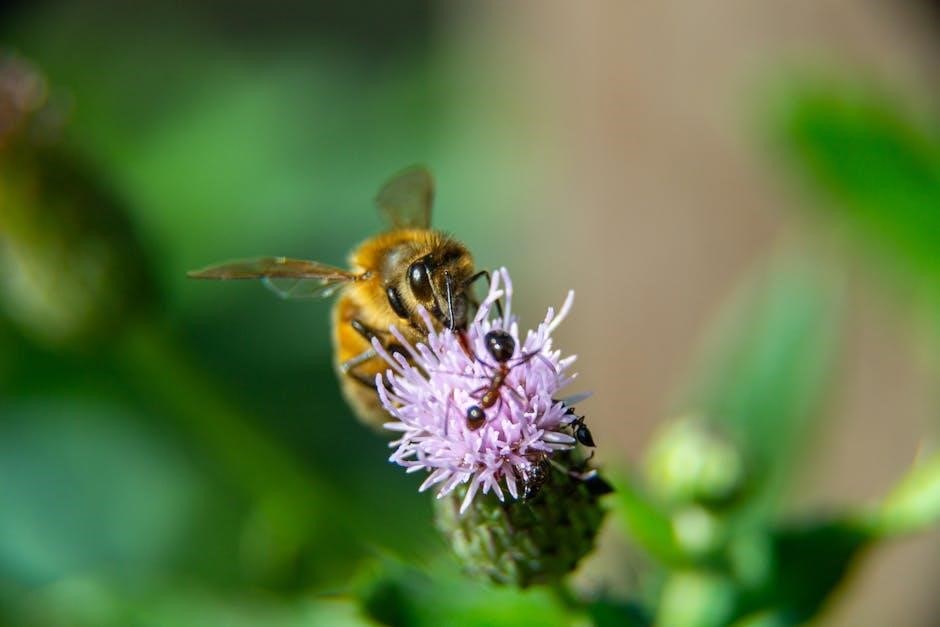
Examining the Undersides of Leaves
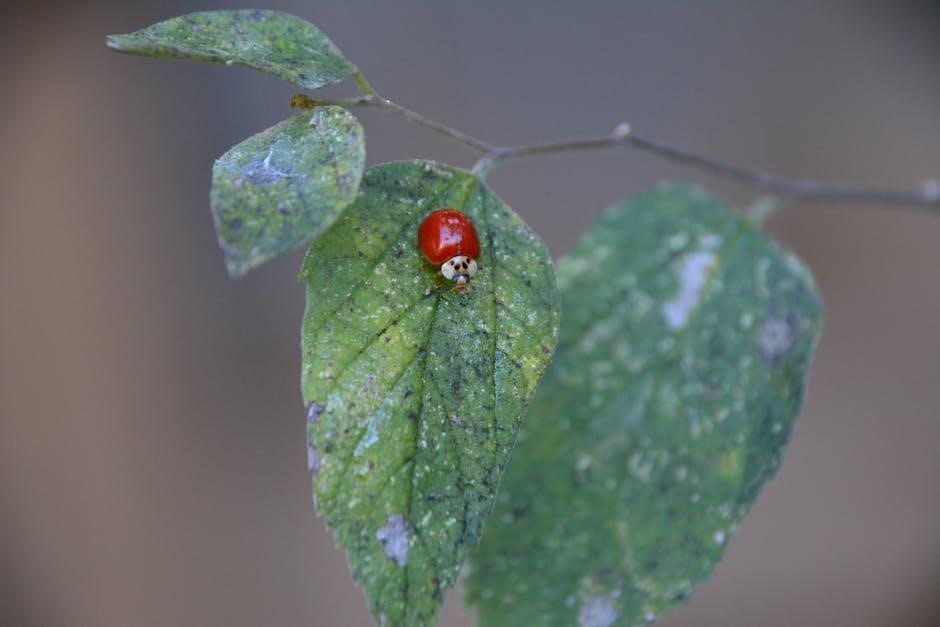
The undersides of leaves are prime locations for insect eggs, as many species prefer this sheltered area. To examine effectively, gently turn leaves over and inspect with a magnifying glass. Common egg-laying insects like whiteflies and aphids often arrange eggs in specific patterns or clusters. Look for tiny, oval-shaped eggs, which may be white, yellow, or brown. Some eggs are laid in protective coverings or oothecae, such as those of cockroaches. Regularly monitoring leaf undersides can help identify potential pests early, preventing infestations and protecting plant health. This method is essential for gardeners and pest control professionals alike.
Inspecting Plant Stems and Branches
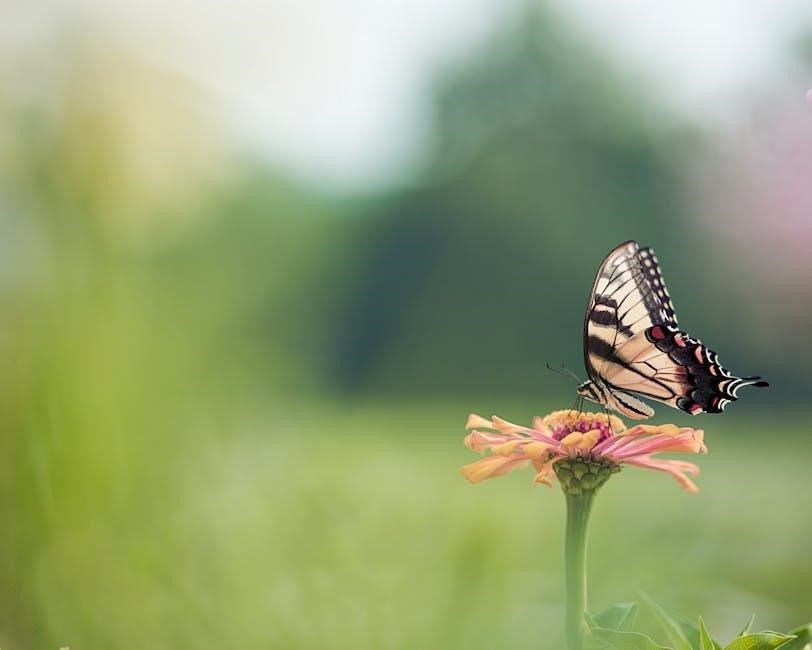
Plant stems and branches are common sites for insect egg deposition, particularly for species like borers and scales. Inspect these areas thoroughly, looking for small, oval, or cylindrical eggs. Use a magnifying glass or hand lens to spot eggs nestled in crevices or beneath bark. Some insects, such as certain beetles, may lay eggs near buds or wounds. Regularly monitoring stems can help detect early infestations, preventing damage to the plant’s vascular system. This practice is vital for maintaining healthy vegetation and ensuring timely pest intervention in gardens and agricultural settings.
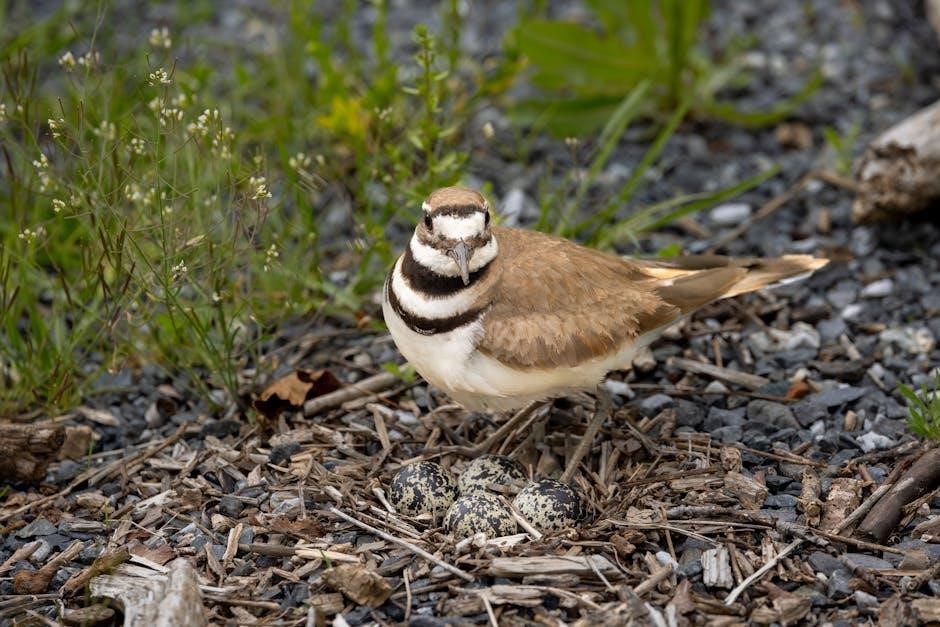
Characteristics of Insect Eggs
Insect eggs vary greatly in shape, size, color, and texture, adapting to their environments for survival. Their unique features aid in identification and ecological adaptation strategies.
Shape and Size Variations
Insect eggs display remarkable diversity in shape and size, aiding identification. Common shapes include oval, spherical, cylindrical, or irregular forms, often adapted for specific environments. Sizes range from minute, barely visible specimens to larger, more conspicuous eggs. For instance, butterfly and moth eggs are typically small and round, while beetle eggs may be oval and slightly elongated. Certain species, like ladybugs, lay elongated eggs, while others, such as lacewings, have distinctive, stalked eggs. These variations, along with unique surface patterns, help in distinguishing species and understanding their ecological roles. Shape and size are critical for accurate identification and pest management strategies.
Color and Texture of Insect Eggs
Insect eggs vary significantly in color and texture, which are key identifiers. Many eggs are white or pale, such as those of bed bugs and fleas, while others may be brown, black, or even metallic. Some species, like ladybugs, have bright yellow eggs, while grasshopper eggs may appear tan or reddish. Textures range from smooth and glossy to ridged or hairy. For example, lacewing eggs often have a stalked, smooth appearance, while certain beetle eggs may be covered in fine hairs. These color and texture traits not only aid in identification but also serve functional purposes, such as camouflage or protection from predators.

Specialized Structures for Egg Protection
Insect eggs often have specialized structures to ensure survival. Many species, like cockroaches, encase their eggs in protective oothecae, hardened casings that shield against predators and environmental stress. Some insects, such as mantises, lay eggs in foam-like structures that harden over time, providing insulation and defense. Others, like certain wasps, cover their eggs in plant material or soil for camouflage. These protective mechanisms vary widely, with some eggs featuring spikes, ridges, or adhesive substances to secure them to surfaces. These structures not only protect the eggs but also play a critical role in their identification, as they often exhibit species-specific traits. Recognizing these features is essential for accurate classification and ecological understanding.
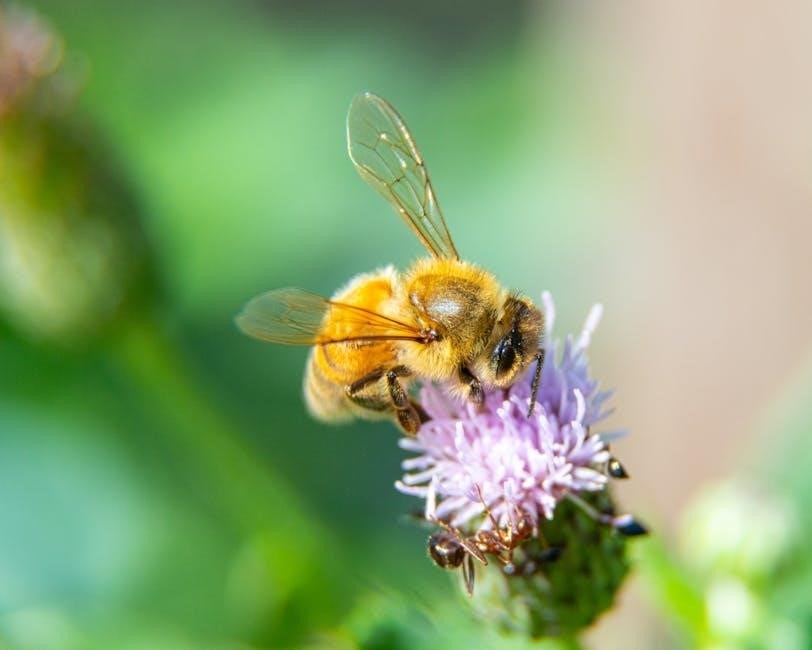
Common Types of Insect Eggs by Species
Insect eggs vary widely by species, with unique shapes, colors, and textures. Common types include cockroach, termite, bed bug, fly, and beetle eggs, each with distinct features for identification.
Cockroach Eggs and Their Identification
Cockroach eggs are typically enclosed in a protective casing called an ootheca, which can contain multiple eggs. These casings are often dark brown or reddish-brown in color and have a leathery texture. They are usually oval or cylindrical in shape and can vary in size depending on the species. Cockroach eggs are often found in hidden, sheltered locations such as cracks, crevices, or beneath debris. Identifying cockroach eggs is crucial for early pest control, as they can hatch quickly and lead to infestations. The ootheca is a key feature for distinguishing cockroach eggs from those of other insects.
Termite Eggs and Their Distinctive Features
Termite eggs are small, white, and typically laid in underground colonies. They are often clustered together in large numbers, making them difficult to spot. The eggs hatch into nymphs, which resemble small, pale termites. Termite eggs are a crucial part of their life cycle and are usually found in soil or near wooden structures. Identifying termite eggs requires careful examination of their habitat and surrounding conditions. The presence of termite eggs can indicate an infestation, making early detection vital for pest control. Their small size and pale color make them challenging to identify without proper tools or expertise.
Bed Bug Eggs and Their Habitat
Bed bug eggs are tiny, white, and approximately 1mm in length. They are often found in cracks, crevices, and near sleeping areas, such as mattress seams, box springs, and behind wallpaper. Bed bugs prefer warm, dark environments, making these spots ideal for laying eggs. Female bed bugs can lay up to 5 eggs per day, which hatch within 6-10 days. Identifying bed bug eggs is crucial for early detection and prevention of infestations. Their presence in bedding or furniture indicates a potential pest problem, requiring immediate attention to avoid widespread infestation.
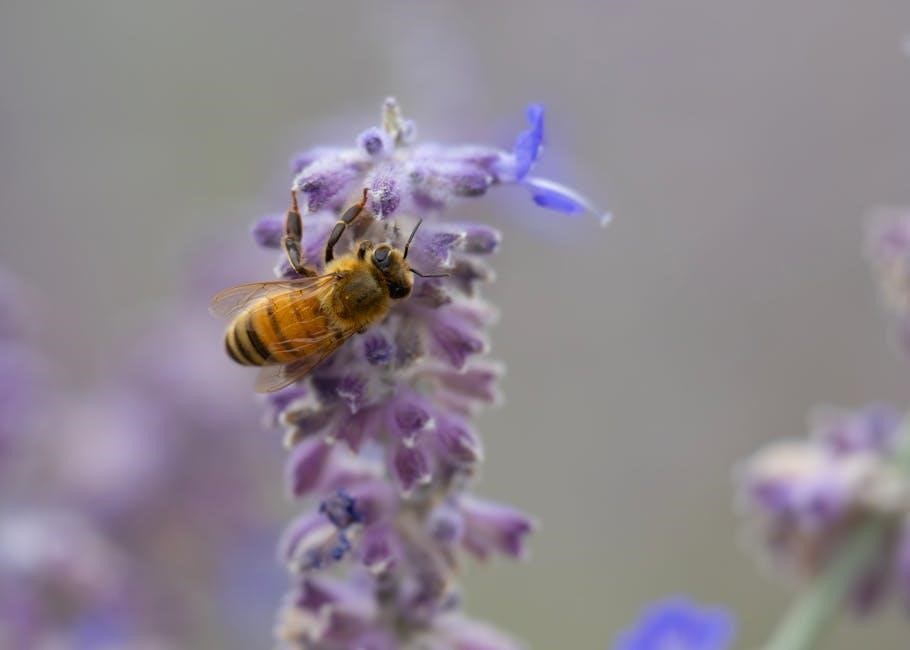
Habitat-Specific Insect Egg Identification
Insect eggs vary by habitat, from garden leaves to aquatic environments. Each species adapts egg-laying strategies to their specific ecological niches for survival and reproduction success.
Garden and Agricultural Settings
In gardens and agricultural areas, insect eggs are often found on leaves, stems, or near soil. Common pests like viburnum leaf beetles and whiteflies lay eggs on leaf undersides. Aphids, tiny and pear-shaped, are frequently seen in clusters. Early detection is crucial for managing infestations. Farmers and gardeners should inspect plants regularly, especially during growing seasons. Using magnification tools can help identify eggs by their shape, color, and texture. Recognizing these signs early prevents damage to crops and maintains ecological balance. This proactive approach supports sustainable agriculture and reduces the need for pesticides.
Forest and Woodland Environments
In forest and woodland environments, insect eggs are often hidden in tree bark, leaf litter, or under plant debris. Species like the spotted lanternfly lay egg masses that can harm native trees. These environments also host beneficial insects, such as parasitic wasps, whose eggs are crucial for pest control. Identifying eggs in these settings requires observing their texture, color, and location. Regular monitoring can help manage invasive species and protect biodiversity. Forest managers use egg identification to maintain healthy ecosystems and prevent outbreaks that could damage timber and wildlife habitats. This practice is vital for conservation efforts and forestry management.
Wetland and Aquatic Habitats
In wetlands and aquatic habitats, insect eggs are often laid near water surfaces or submerged vegetation. Mosquitoes and dragonflies are common examples, with eggs adapted to survive in moist environments. These eggs may be white, translucent, or camouflaged to blend with surroundings. Identifying them requires examining floating debris, pond edges, and shallow waters. Aquatic insects play a key role in food webs, supporting fish and other wildlife. Monitoring their eggs helps in understanding ecosystem health and managing waterborne pests, ensuring balanced biodiversity in these unique environments. Regular observation aids in conservation and ecological maintenance. Early detection prevents invasive species outbreaks, protecting native habitats.
Tools and Resources for Identification
Use magnifying glasses, online databases, and field guides to identify insect eggs. These tools provide detailed images and descriptions, aiding accurate species recognition and classification.
Using Magnification Tools for Egg Examination
Magnification tools are essential for examining insect eggs, as they reveal critical details like size, shape, and texture. Use a magnifying glass or microscope to inspect eggs closely. These tools help distinguish between similar species and identify unique features such as surface patterns or egg case structures. Online resources and field guides often include images taken with magnification, aiding comparison and accurate identification.
Online Resources and Field Guides
Online resources and field guides are invaluable for insect egg identification. Websites like BugGuide and UC IPM offer detailed images and descriptions of eggs from various species. These tools provide insights into egg characteristics, such as color, shape, and habitat preferences. Field guides often include high-quality images and expert tips, making identification more accessible. Additionally, many resources are tailored to specific regions, including the USA, ensuring relevance to local insect populations. By leveraging these resources, both professionals and hobbyists can enhance their ability to accurately identify insect eggs and understand their ecological roles or pest management implications.
Conservation and Pest Management
Identifying insect eggs aids in conservation by targeting harmful species early, reducing pesticide use and protecting beneficial insects, thus maintaining ecological balance and promoting sustainable practices.
Why Insect Egg Identification Matters
Insect egg identification is vital for conservation and pest management, as it enables early detection of harmful species. By recognizing eggs, professionals can implement targeted control measures, reducing pesticide use and protecting beneficial insects. This practice supports biodiversity by preventing the spread of invasive species. Accurate identification also aids in monitoring pest populations, crucial for agricultural and forestry industries. Additionally, it helps protect public health by identifying disease-carrying insects. Overall, insect egg identification is a cornerstone of sustainable ecological management and pest control strategies.
Implications for Pest Control and Ecology
Accurate insect egg identification has significant implications for pest control and ecological balance. Early detection of pest eggs allows for targeted interventions, minimizing damage to crops and reducing chemical use. This approach protects beneficial insects and maintains ecosystem health. In ecology, understanding egg distributions aids in studying species behavior, population dynamics, and habitat preferences. It also helps in combating invasive species, which can disrupt local ecosystems. Effective egg identification strategies are essential for developing sustainable pest management practices that support both agricultural productivity and environmental conservation efforts across the USA.
Mastering insect egg identification empowers gardeners, ecologists, and pest control professionals to make informed decisions, promoting sustainable practices and environmental balance across the USA.
Key Takeaways for Effective Identification
Identifying insect eggs requires careful observation and knowledge of their characteristics. Use magnification tools to examine size, shape, and texture. Check undersides of leaves, stems, and branches, as these are common egg-laying sites. Recognize that eggs vary widely in color, shape, and habitat. Consult online resources like BugGuide or field guides for accurate identification. Understanding the life cycles and preferred habitats of insects can aid in locating their eggs. Early detection of pest species eggs can prevent infestations, making identification a critical skill for gardeners and pest control professionals. Accurate identification ensures effective management strategies.
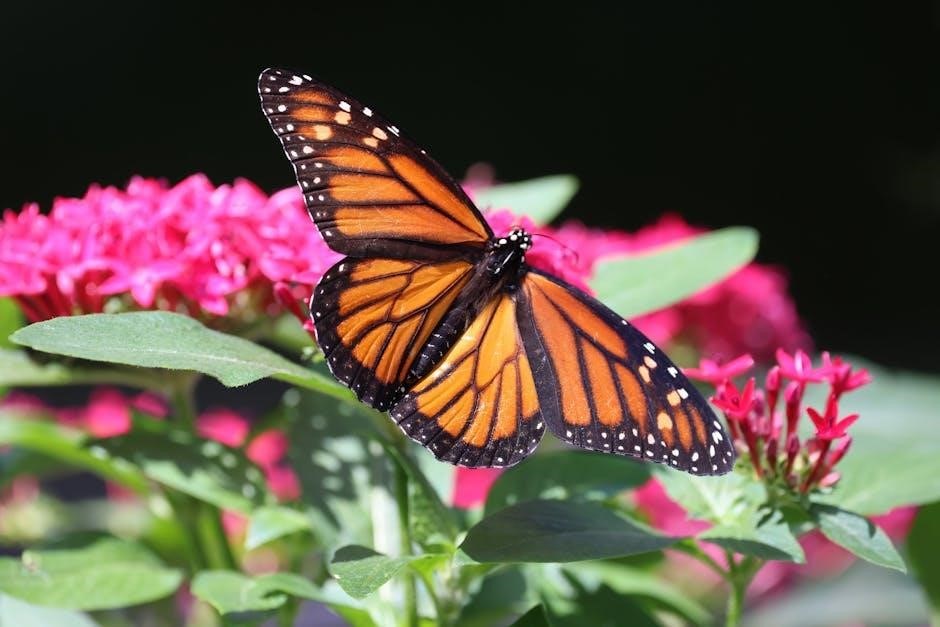
Future Directions in Insect Egg Research
Future research in insect egg identification will focus on advancing technologies like AI and machine learning to automate egg recognition. High-resolution imaging and genetic studies will enhance species-specific identification. There is growing interest in understanding egg ecology to improve conservation and pest management strategies; Non-invasive monitoring techniques, such as drone-based egg detection, are being explored for large-scale applications. Collaborative efforts between entomologists, ecologists, and technologists will drive innovation, ensuring more accurate and efficient identification methods. These advancements promise to revolutionize how we study and manage insect populations, benefiting both agriculture and environmental conservation efforts.